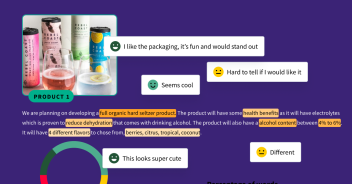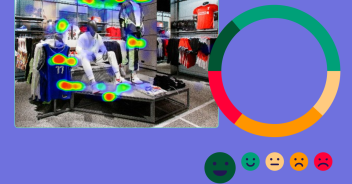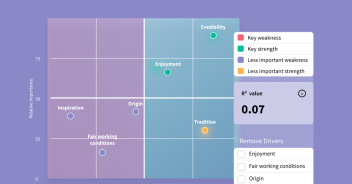Consumer Research Is Entering a New Era
If 2025 was the year of experimentation, 2026 marks the year of integration. AI, automation, and cultural context are converging to reshape how brands understand, engage with, and respond to consumers.
Today’s leading organizations are blending human expertise with machine intelligence, transforming consumer research into a continuous, always-on ecosystem that drives faster, more confident decisions.
At SightX, we’re seeing this evolution firsthand across how data is gathered, how insights are delivered, and how research fuels strategic growth.
Want to see what’s next for insights? Download the full 2026 Consumer Research Trends Report to explore the biggest shifts redefining the industry.
AI Becomes the Research Backbone
Generative AI is now central to how research gets done.
It’s no longer just writing surveys. It’s designing methodologies, analyzing open-ended data at scale, and generating ready-to-share insights. By 2026, AI has become research infrastructure, expanding researchers’ capacity rather than replacing them.
The result? Faster cycles from question to insight, and a new standard for decision-making agility.
Synthetic Data Speeds Up Testing
As traditional panels face declining response rates and increasing fraud, brands are turning to synthetic data: AI-generated datasets modeled on real-world behavior.
This emerging practice allows teams to test and iterate early, saving time and cost while preserving human respondents for deep validation and qualitative exploration.
Trust and Ethics Take Center Stage
Consumers are more data-savvy than ever, and privacy has become a key driver of brand trust.
Transparent consent, clear communication, and responsible AI design are now competitive differentiators. Leading organizations view digital trust not as compliance, but as a brand asset central to loyalty and long-term growth.
Always-On Feedback Powers Agility
Research is no longer episodic.
In 2026, insights flow continuously through CRM systems, loyalty programs, and digital touchpoints, creating an “always-on” view of consumer behavior. This shift enables brands to adapt in real time, turning data into live strategy.
Culture Becomes a Data Layer
Demographics alone no longer define the modern consumer.
Brands are enriching datasets with cultural context -values, beliefs, and narratives- that shape perception and behavior. This deeper understanding fuels authenticity, helping organizations connect meaningfully with audiences around the world.
Better Experiences, Better Data
Respondent experience is now a design priority.
From shorter mobile-first surveys to gamified and conversational formats, research participation is being reimagined for engagement and respect. The outcome? Higher data quality, lower dropout rates, and insights teams that can trust their results.
Human + Machine Collaboration Wins
While AI scales analysis, human researchers provide what machines can’t: judgment, empathy, and strategic storytelling.
The most successful insights teams in 2026 will combine both: leveraging automation to accelerate discovery, while humans ensure insights are ethical, contextual, and actionable.
Visual Storytelling Drives Action
Insights don’t create impact unless they’re understood.
Interactive dashboards, data visualizations, and even AI-generated video briefs are transforming how research findings are communicated. Visual-first storytelling empowers everyone—from analysts to executives—to act faster and with greater confidence.
The future of consumer research is fast, flexible, and deeply human. Download the 2026 Consumer Research Trends Report here to explore the top trends shaping the industry—from AI and synthetic data to always-on ecosystems and visual storytelling—and discover how leading brands are already preparing for what’s next.



